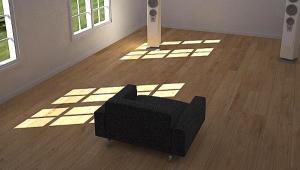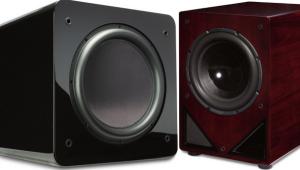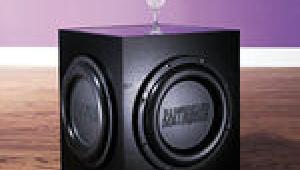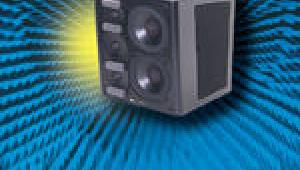Face Off: Surround-Speaker-Configuration Wars Page 3
The next comparison was between dual dipole speakers and dual monopole speakers for the surround back channel. Conclusions for the previous comparison were actually drawn after the completion of this test. Participants were told, after the fact, that the first two setups used a single rear speaker and that the third and fourth setups used dual rear speakers. They were asked to draw conclusions of each pairing separately and then all four configurations collectively.

The conclusions of the second pairing were similar to the first in that the majority of the panel preferred the dipole-rear-channel arrangement. John stood as the lone dissenter in his preference for the dual-monopole rear channel. He recognized that the dipole speakers offered a more diffuse and enveloping sound but preferred the precision of the direct-radiating loudspeakers. Brandon preferred the dual-dipole arrangement, citing that the surround back channel never sounded like it was directly behind him until I used dipole speakers. I should mention that Brandon was seated in the center. He also said that either dipole configuration (single- or dual-speaker) made the sound fuller than with either monopole arrangement. I found that, when Tex was "repairing" the rear channel, the sound effect would collapse to the nearest of two direct-radiating speakers, while the dipole speakers would preserve some sense of central location. This is a well-known phenomenon called the Precedence Effect (a component of the Haas Effect), in which identical sounds coming from two locations are only heard from the nearest source. By comparison, the single monopole rear speaker was too direct (when sitting off-center) and drew too much attention to itself.
With a few tests repeated for good measure, the panel universally concluded that the dual-surround-speaker setup was the way to go. The most compelling reason was that dual speakers, regardless of type, seemed to fill the room with sound better than single speakers. Since our attention doesn't need to be anchored to the back wall, as it does with the center front channel, there seems to be less need for a single speaker in the back. However, we hadn't yet decided whether the rear speakers should be monopole or dipole in nature. So far, the group seemed to be leaning toward dipoles, with some exceptions, but we needed to do some more tests to figure out if the same held true for the side surround channels.
Dual-Dual Dipoles Versus Dual-Dual Monopoles Versus . . .
The last group of tests took us back to the beginning, so to speak, in the sense that I wanted to compare some of the rear-channel arrangements we liked and disliked with different side speakers. Each of the following tests used dual rear-channel speakers. First, we tried dipole rear channels with dipole side speakers; next, we used monopole rear speakers with dipole sides; then, we revisited the monopole-back-and-side-channel configuration, as well as the dipole-back-and-monopole-side arrangement.

To stir things up even more, I played a wider variety of materials, including THX's jungle test sequence and the trailer for the film The Astronaut's Wife, both recorded in Surround EX. The one thing that remained consistent with each of these setups was that the panel, including myself, always preferred the dipole surround speakers. Of this last test group, the all-direct-radiating-speaker setup was the clear loser, garnering few votes from the judging panel. Surprisingly, Jason and Brandon both liked the all-dipole arrangement, even though they had originally dismissed dipole surround speakers in the non-EX setup. Brandon pointed out that either of the dipole/monopole mixtures was more than satisfactory and came a close second to the all-dipole setup. He surmised that having at least one set of dipoles was adequate. Jason's preference seemed to waiver, depending on the directionality of the source material. Everyone seemed to agree that the more-ambient soundtracks came across better with diffuse dipole speakers, but there was some dissension as to whether diffuse radiation was good when discrete effects were played. Again, with monopole back speakers, I heard discrete effects collapse to the nearest speaker, something less noticeable with monopole side speakers. John felt that all of the arrangements were sufficiently satisfying, reserving his preference for the more noticeable and precise sound placement that the monopole speakers offered.
- Log in or register to post comments




























































